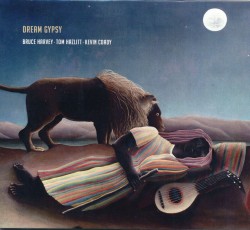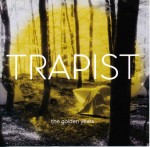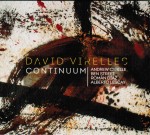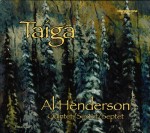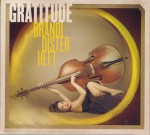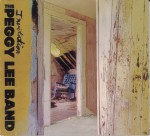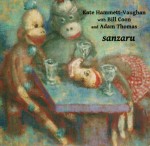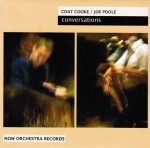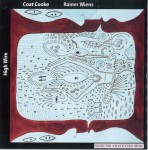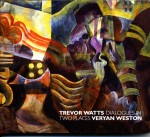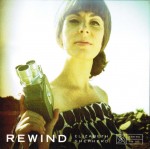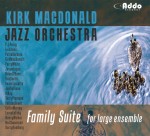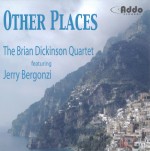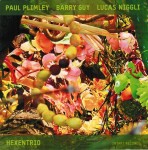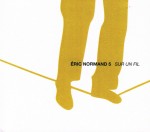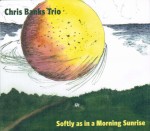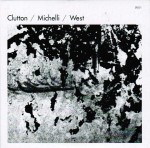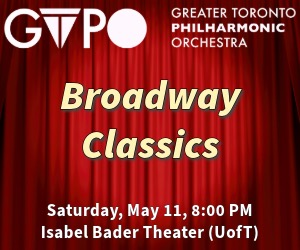Defying doomsayers who predicted the death of the LP, the CD’s disappearance appears oversold. True music collectors prefer the physical presence and superior fidelity of a well-designd CD package and important material continues to be released. Partisans of advanced music, for instance, can choose any one of these sets.
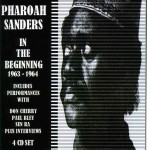 The only saxophonist to be part of saxophonist John Coltrane’s working group, tenorist Pharoah Sanders is celebrated for his own highly rhythmic Energy Music. In the Beginning 1963-64 (ESP-Disk ESP-4069 www.espdisk.com), a four-CD package, highlights his steady growth. Besides Sanders’ first album as leader, very much in the freebop tradition and as part of a quintet of now obscure players, the other previously released sounds capture Sanders’ recordings in the Sun Ra Arkestra. More valuable is a CD of unissued tracks where Sanders asserts himself in quartets led by cornetist Don Cherry or Canadian pianist Paul Bley. The set is completed by short interviews with all of the leaders. Oddly enough, although they precede his solo debut, Sanders’ playing is most impressive with Bley and Cherry. With more of a regularized beat via bassist David Izenson and drummer J.C. Moses, Cherry’s tracks advance melody juxtaposition and parallel improvisations with Sanders’ harsh obbligato contrasted with the cornetist’s feisty flourishes; plus the darting lines and quick jabs of pianist Joe Scianni provide an unheralded pleasure. Bley’s economical comping and discursive patterning lead the saxophonist into solos filled with harsh tongue twisting lines and jagged interval leaps. With Izenson’s screeching assent and drummer Paul Motian’s press rolls, the quartet plays super fast without losing the melodic thread. Sun Ra is a different matter. Recorded in concert, the sets include helpings of space chants such as Rocket #9 and Next Stop Mars; a feature for Black Harold’s talking log drums; showcases for blaring trombones, growling trumpets; plus the leader’s propulsive half-down-home and half-outer-space keyboard. Sharing honking and double tonguing interludes with Arkestra saxists Pat Patrick and Marshall Allen, Sanders exhibits his characteristic stridency. Enjoyable for Sun Ra’s vision which is spectacular and jocular, these tracks suggest why the taciturn Sanders soon went on his own.
The only saxophonist to be part of saxophonist John Coltrane’s working group, tenorist Pharoah Sanders is celebrated for his own highly rhythmic Energy Music. In the Beginning 1963-64 (ESP-Disk ESP-4069 www.espdisk.com), a four-CD package, highlights his steady growth. Besides Sanders’ first album as leader, very much in the freebop tradition and as part of a quintet of now obscure players, the other previously released sounds capture Sanders’ recordings in the Sun Ra Arkestra. More valuable is a CD of unissued tracks where Sanders asserts himself in quartets led by cornetist Don Cherry or Canadian pianist Paul Bley. The set is completed by short interviews with all of the leaders. Oddly enough, although they precede his solo debut, Sanders’ playing is most impressive with Bley and Cherry. With more of a regularized beat via bassist David Izenson and drummer J.C. Moses, Cherry’s tracks advance melody juxtaposition and parallel improvisations with Sanders’ harsh obbligato contrasted with the cornetist’s feisty flourishes; plus the darting lines and quick jabs of pianist Joe Scianni provide an unheralded pleasure. Bley’s economical comping and discursive patterning lead the saxophonist into solos filled with harsh tongue twisting lines and jagged interval leaps. With Izenson’s screeching assent and drummer Paul Motian’s press rolls, the quartet plays super fast without losing the melodic thread. Sun Ra is a different matter. Recorded in concert, the sets include helpings of space chants such as Rocket #9 and Next Stop Mars; a feature for Black Harold’s talking log drums; showcases for blaring trombones, growling trumpets; plus the leader’s propulsive half-down-home and half-outer-space keyboard. Sharing honking and double tonguing interludes with Arkestra saxists Pat Patrick and Marshall Allen, Sanders exhibits his characteristic stridency. Enjoyable for Sun Ra’s vision which is spectacular and jocular, these tracks suggest why the taciturn Sanders soon went on his own.
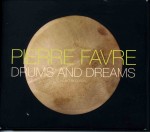 Partially in reaction to vocifeous American players like Sanders, by the 1970s European innovators developed a spacious and subdued take on improvisation. This can be sampled via the solo work of Swiss percussionist Pierre Favre, a model of taste and restraint on Drums and Dreams (Intakt CD 197 www.intaktrec.ch). Overall it’s 1972’s Abanaba which is the defining masterwork, with 1970’s Drum Conversation and 1978’s Mountain Wind, the buildup and elaboration of maturity. Favre has such command of the sonorous properties of his expanded kit that he can use approximations of tones from unusual sources such as guiro, conches, unlathed cymbals and thunder sheets plus a regular kit without bombast or showiness. A track such as Kyoto is a fascinating duet between kettle drum and tuned gongs, expanded by theremin-like resonations; while Gerunonius is an essay in abrasion, as textures created by sawing with a bow on drum rims are integrated with shakes, pops and pulls. Roro fastens on triple sticking at supersonic speeds, producing ringing tones from log drums, cymbals and gongs, while the final track demonstrates how aggression can be paced as bell trees ping and snares sizzle. CD1 establishes a framework for juxtapositions, with silences integrated with kinetic paradiddles and ruffs. Sounding at times like multiple players, Favre’s distinctive sounds are as likely to arise by twisting mallets on aluminum bars as from blunt whacks on oversized gongs. By 1978, his rhythmic palette had expanded so that he could replicate the sound of a telephone bell ring or Chinese temple bell with equal facility and without any loss in power.
Partially in reaction to vocifeous American players like Sanders, by the 1970s European innovators developed a spacious and subdued take on improvisation. This can be sampled via the solo work of Swiss percussionist Pierre Favre, a model of taste and restraint on Drums and Dreams (Intakt CD 197 www.intaktrec.ch). Overall it’s 1972’s Abanaba which is the defining masterwork, with 1970’s Drum Conversation and 1978’s Mountain Wind, the buildup and elaboration of maturity. Favre has such command of the sonorous properties of his expanded kit that he can use approximations of tones from unusual sources such as guiro, conches, unlathed cymbals and thunder sheets plus a regular kit without bombast or showiness. A track such as Kyoto is a fascinating duet between kettle drum and tuned gongs, expanded by theremin-like resonations; while Gerunonius is an essay in abrasion, as textures created by sawing with a bow on drum rims are integrated with shakes, pops and pulls. Roro fastens on triple sticking at supersonic speeds, producing ringing tones from log drums, cymbals and gongs, while the final track demonstrates how aggression can be paced as bell trees ping and snares sizzle. CD1 establishes a framework for juxtapositions, with silences integrated with kinetic paradiddles and ruffs. Sounding at times like multiple players, Favre’s distinctive sounds are as likely to arise by twisting mallets on aluminum bars as from blunt whacks on oversized gongs. By 1978, his rhythmic palette had expanded so that he could replicate the sound of a telephone bell ring or Chinese temple bell with equal facility and without any loss in power.
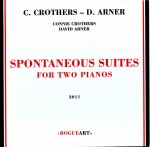 This mixture of delicacy and strength is expanded to its pianistic limits on Spontaneous Suite for Two Pianos (Rogueart R0G-037 www.roguart.com). These four CDs capture an entire recording session beginning with the evocative acceleration from feathery chording to anvil-like kinetic pressure on CD1, track one, and conclude with key-clipping near-player piano continuum on CD4, track seven. Anyone who follows dual keyboardists like Radu Lupu and Murray Perahia or Albert Ammons andPete Johnson will be staggered by the work here. Completely improvised, the nine interlocking suites expose almost all variations of what can be extracted from 176 keys. Technical wizardry plus jazz inflections are apparent in the playing of Connie Crothers and David Arner, yet focussed reductionism as well as spontaneity is also on tap.
This mixture of delicacy and strength is expanded to its pianistic limits on Spontaneous Suite for Two Pianos (Rogueart R0G-037 www.roguart.com). These four CDs capture an entire recording session beginning with the evocative acceleration from feathery chording to anvil-like kinetic pressure on CD1, track one, and conclude with key-clipping near-player piano continuum on CD4, track seven. Anyone who follows dual keyboardists like Radu Lupu and Murray Perahia or Albert Ammons andPete Johnson will be staggered by the work here. Completely improvised, the nine interlocking suites expose almost all variations of what can be extracted from 176 keys. Technical wizardry plus jazz inflections are apparent in the playing of Connie Crothers and David Arner, yet focussed reductionism as well as spontaneity is also on tap.
Piano guru Lennie Tristano’s most accomplished student, New York-based Crothers has recorded with jazzmen like drummer Max Roach. Up-state New York’s Arner is associated with choreographers such as Meredith Monk. Playing side-by-side with layered chords, palindromes or in counterpoint, the two evoke many aspects of piano literature while creating their own. For instance The Hoofer which bounces and taps as a terpsichorean fantasia is followed by Blues and the Moving Image. Despite low-pitched glissandi, this blues is polyrhythmic, depending on a dusting of high-frequency tremolo to provide the necessary emotion. The Reckoning is meditative and linear, while Density 88X2 moves from jocular patterns to blunt syncopation. An extended sequence like City Rhapsody may unroll staccatissimo with soundboard rumbles and ringing cadenzas in equal measures, but it never unravels or loses connectivity. Overall the real connection this duo exhibits is with their own histories. Basso notes on Swing Migration and Fool both unearth Tristanto-like themes among the cumulative cascades and pitch-sliding vibrations.
 With the German capital now home to a mass of creative musicians, it takes 40 selections on a three-CD anthology Echtzeitmusik Berlin (Mikroton CD 14/15/16 www.mikroton.net) to try to define the scene. Although currents of free jazz, notated music, punk-rock and all sorts of electronic programming are universally accepted, echtzeitmusik is defined differently by each innovator. For instance the long pauses and foreshortened breaths from Robin Hayward’s microtonal tuba and intermittent plinks from Morten Olsen’s rotating bass drum on Deep Skin may come from the same reductionist base as Versprechen which mutates piano string strums by Andrea Neumann with linear trumpet breaths from Sabine Ercklentz. But the studio collage that’s Annette Krebs’ In-between, mutating ring-modulator whooshes, music samples and layered voices has little in common except density with Antoine Chessex’s Errances which inflates a single saxophone’s tremolo timbres to near organ-like cascades. So what defines the sounds? The key may be Blues No.5 by Perlonex.Guitar feedback, turntable scratches plus drum smacks and electronic quivers reach an intensity that equals the emotionalism of a blues singer. Consequently honesty and innovation supersede musical forms. Echtzeitmusik Berlinallows the listener to sample and choose.
With the German capital now home to a mass of creative musicians, it takes 40 selections on a three-CD anthology Echtzeitmusik Berlin (Mikroton CD 14/15/16 www.mikroton.net) to try to define the scene. Although currents of free jazz, notated music, punk-rock and all sorts of electronic programming are universally accepted, echtzeitmusik is defined differently by each innovator. For instance the long pauses and foreshortened breaths from Robin Hayward’s microtonal tuba and intermittent plinks from Morten Olsen’s rotating bass drum on Deep Skin may come from the same reductionist base as Versprechen which mutates piano string strums by Andrea Neumann with linear trumpet breaths from Sabine Ercklentz. But the studio collage that’s Annette Krebs’ In-between, mutating ring-modulator whooshes, music samples and layered voices has little in common except density with Antoine Chessex’s Errances which inflates a single saxophone’s tremolo timbres to near organ-like cascades. So what defines the sounds? The key may be Blues No.5 by Perlonex.Guitar feedback, turntable scratches plus drum smacks and electronic quivers reach an intensity that equals the emotionalism of a blues singer. Consequently honesty and innovation supersede musical forms. Echtzeitmusik Berlinallows the listener to sample and choose.
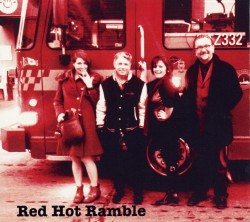 Red Hot Ramble
Red Hot Ramble

